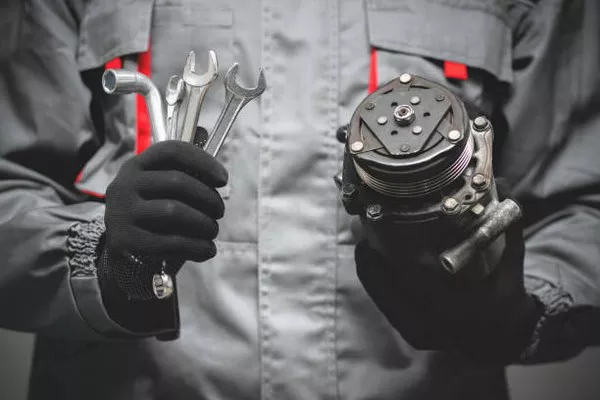In the realm of fluid dynamics and engineering, accurate measurement of fluid flow rates is crucial for various industrial processes, from water distribution to oil and gas applications. Among the diverse range of flow measurement techniques available, the Venturi flow meter stands out for its precision and reliability. In this article, we delve into the mechanics of Venturi flow meters, exploring their operation, components, and the science behind their ability to accurately measure fluid flow rates.
The Principle of Operation
At its core, a Venturi flow meter operates on the principle of Bernoulli’s equation, which relates the pressure, velocity, and potential energy of a fluid within a flowing system. The Venturi flow meter is designed to create a constriction in the flow path, leading to a localized increase in fluid velocity and a corresponding decrease in pressure. This change in pressure is directly proportional to the flow rate of the fluid, allowing for accurate measurement.
Components of a Venturi Flow Meter
Inlet Section: The fluid enters the Venturi flow meter through an inlet section, which is often designed to ensure a smooth and streamlined flow. This helps minimize turbulence and disturbances as the fluid approaches the constriction.
Converging Section: Following the inlet, the flow path narrows in the converging section of the Venturi meter. This narrowing causes the fluid velocity to increase while its pressure decreases due to the principle of continuity and Bernoulli’s equation.
Throat: The narrowest point of the Venturi meter is known as the throat. At this point, the fluid reaches its maximum velocity and the lowest pressure. This pressure drop is directly related to the flow rate of the fluid.
Diverging Section: After passing through the throat, the flow path expands in the diverging section, allowing the fluid to regain some of its lost pressure while its velocity decreases. The design of the diverging section helps minimize disturbances as the fluid exits the meter.
Pressure Taps: Pressure taps are strategically placed at the inlet and the throat of the Venturi meter. These taps allow pressure measurements to be taken at these specific points, which are crucial for calculating the pressure drop and, consequently, the flow rate.
The Flow Measurement Process
Pressure Difference: As the fluid flows from the inlet to the throat of the Venturi flow meter, its velocity increases and its pressure decreases due to the narrowing of the flow path. The pressure taps at the inlet and throat capture the pressure difference.
Pressure-Flow Relationship: The pressure difference between the inlet and throat is directly proportional to the square of the fluid velocity. According to Bernoulli’s equation, this relationship is maintained.
Calibration: To accurately measure flow rates, Venturi flow meters are calibrated using known flow rates and their corresponding pressure differentials. Calibration curves are established to correlate pressure differences with flow rates.
Flow Rate Calculation: By measuring the pressure drop between the inlet and throat, the calibrated flow meter can determine the flow rate of the fluid passing through it. The pressure difference is then used to reference the calibration curve and provide an accurate flow rate reading.
Advantages of Venturi Flow Meters
Accuracy: Venturi flow meters are known for their high accuracy, especially in applications with stable and steady flow conditions. Their calibration process ensures precise measurements over a wide range of flow rates.
Low Pressure Loss: Despite the pressure drop that occurs within the Venturi flow meter, the pressure loss is relatively low compared to other flow measurement techniques, making it efficient for various fluid systems.
Minimal Maintenance: The design of Venturi flow meters is simple, with no moving parts. This results in minimal maintenance requirements and long-term reliability.
Wide Range of Applications: Venturi flow meters can be used for measuring a variety of fluids, from liquids to gases, and are suitable for both clean and dirty fluids. Their versatility makes them suitable for applications in various industries.
Considerations and Limitations
Installation Requirements: Proper installation is crucial to ensure accurate measurements. Flow disturbances, pipe misalignments, and improper installation angles can impact the meter’s performance.
Flow Conditions: Venturi flow meters work best under stable flow conditions. Sudden fluctuations or variations in flow rates can affect the accuracy of measurements.
Non-Linear Relationship: While the pressure difference and flow rate have a direct relationship, it is not linear. Calibrations are required to establish accurate measurement curves.
Size and Cost: Venturi flow meters require specific pipe sizes for installation, which may limit their use in certain applications. Additionally, their initial cost can be higher compared to some other flow measurement methods.
Conclusion
The Venturi flow meter, with its ingenious design based on Bernoulli’s equation, has proven to be a reliable and accurate tool for measuring fluid flow rates. By strategically creating a pressure drop through a constriction in the flow path, Venturi flow meters harness the principles of fluid dynamics to provide valuable insights into industrial processes. With applications ranging from water treatment to oil refineries, these meters continue to demonstrate their prowess in fluid measurement, ensuring efficiency, precision, and informed decision-making across various industries.

